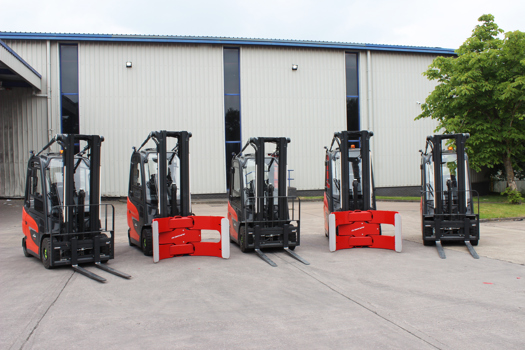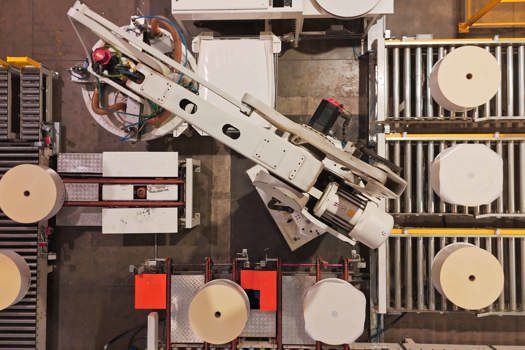Imagine a printer turning up to a first meeting with a new client, sporting ginormous 1970s flares and a novelty cartoon tie, all the while gabbling about every single service they’ve ever offered, regardless of its relevance. Not exactly a first impression, or indeed fashion statement, to be proud of.
And yet, when you think about it, this is not so far from the first impression that many businesses are in fact making. In an ever-more digital age, the very first experience that potential customers, suppliers, prospective employees and competitors are likely to have of a company will be of visiting its website. And so dated fonts, outdated company information, cheesy cartoons or stock photos, and a navigation path that bamboozles with an onslaught of obscure and irrelevant technical information, could have the printer losing valuable contacts without them even realising.
The question many printers will be asking themselves more and more frantically, then, is just what their website should consist of, and how many resources they should be channelling its way.
Tara Pickles' immediate answer to this quandary would be "plenty". She is marketing manager at Leicester-based GI Solutions, and believes a website should play a key role in attracting new business. "I think the importance of the website is ever increasing," she says. "That’s why we’re paying an external consultant to help update ours. An outside company will bring a completely different attitude, so they’ll critique what you’re doing in a different way. You won’t end up going round in circles, which you can do if you’re doing it in-house."
Clear presentation
One suggestion this consultant has so far made, Pickles reports, is changing the look of the website to a Windows 8-type visual, replacing tab options with clickable image boxes to give the site a modern look and make it more intuitive to navigate: "You’ve got to be looking at presenting what you can do for clients in the clearest way possible," she says.
Other key tenets of good website design, Pickles advises, include keeping content fresh and interesting by, for example, including animations of print formats, and videos and social media feeds, with these latter features crucial in helping people find the site in the first place.
"It used to be having the right key words in the right places that increased your SEO but now there’s more onus on social media feeds and interactive video," she says. "So if you include LinkedIn and Twitter information, it drives people to the website and then to contact you for a quote or for more information about your services."
Ann McLaughlin, business services director at APS Group, is similarly convinced of the importance of investing in a sales-generating website, and of the importance of stimulating website visitors with exciting content.
"When we look at Google Analytics every month, we’re finding that we’re drawing people to the news sections and the blog more than anything else, because these are the things that are refreshed often," she reports. "I’m not saying that we’re necessarily going to convert those visitors to a sale straight away, but having people regularly checking the website does help our overall marketing effort."
McLaughlin points out, however, that building a website that is both optimised for search engines and interesting and informative once the browser gets there, doesn’t have to be expensive or difficult.
"We’re all busy and we’re all trying to do things as cost-effectively as possible, so I don’t think there’s anything wrong with repurposing stuff and reusing it," she says. "It’s about using content as creatively as you can, so if you’ve done a case study you can put that on your website," she continues, adding that the APS website is actually based on the free-to-use Wordpress content management system (CMS).
Robbie Lockie, art director at askrobbie.com and the brains behind several printers’ websites, including that of City of London outfit Rapidity, agrees that even when paying for designers and web developers, a good website needn’t break that bank.
"A small site could cost around £1,500, and should take just over a week to build," he advises. "A printer can find someone reasonably priced by posting an advert on a job listings website like freelancers.net."
"My advice would be: shop around," adds Andy Wilson, managing director at Victoria Litho printers, a company currently revamping its website. "There are a lot of people now offering the same kind of service, so where maybe five or 10 years ago it could be a very costly undertaking, it’s not now. So a printer could easily get a website for under £5,000 these days."
And in fact a printer doesn’t necessarily have to even spend this much, many would point out. With the increasing ubiquity of software firms offering template websites for people to pay a small monthly fee for and customise themselves –such as Web Fusion, 123 Reg and Go Daddy – being the proud owner of a decent website could cost a printer as little as £10 or £20 a month.
These types of websites can also reduce the hassle often associated with designing a website in-house or liaising with an external expert, says Richard Stevenson, head of PR at website hosting company 1&1. He explains that this is exactly what his company’s template system is intended to do.
"People often buy a template website, but then realise they’re going to have to write it themselves and that it will take up a lot of their time, so they end up abandoning it and just not bothering," he says, reporting a 1&1 survey that found 46% of the businesses surveyed still didn’t have a website due to feeling they couldn’t afford the cost or time commitment. "But with ours, we provide industry-specific templates so that someone can be up and running with a website in a matter of hours."
Keep it simple
These ‘my first website’ type packages start to look particularly attractive when it’s remembered that, as Lockie reiterates, simplicity is the first commandment of good website design.
"There should be clear calls to action without too much clutter and confusion and clear sales information, so people can call up and ask questions," he says. "And there are many different ways to achieve this. There’s a website called Squarespace, which is a beautifully designed CMS, and Wordpress is great as well."
Of course, as functional and well-designed as many of these template websites now are, there’s still no denying that you do get what you pay for. Lockie’s second golden rule of website design, for example, of creating something with enough flair and originality to sway a customer in your direction rather than a competitors’, certainly won’t be achievable on a very simple platform.
But then there are many who would point to the fact that actually not every printer expects their website to function as a sales tool anyway, meaning that –without the incentive of ROI from their site– they’re unlikely to feel the need to invest in all-singing, all-dancing features.
Nigel Dace, managing director at Dace Print, is one such printer. "I don’t feel there’s any sales benefit to us having a website at all," he says. "We work with trade customers and they float around all of the different printers like us. We bring business in by picking the phone up and enquiring if they might be interested to hear what our prices are because everything’s so price orientated now. So, for us, it’s important to have a website just so we have a presence – just so we can say we’ve got one."
Though convinced of the value of the website-as-sales-tool for GI Solutions and many other printers, Pickles does agree that the shape a website takes will depend completely on what the company wants it to do: "You need to define the purpose of the website – you need to decide if it’s going to be a lead generation or simply an informative tool so that you can tailor your content around that," she says.
So when casting a critical eye over their website, warts –or rather painfully dated fonts – and all, the first question a printer must ask themselves is: what function do I want this to perform? Then they will be able to decide whether or not a simple off-the-shelf template will suffice to prove the existence and credibility of the company and provide the all-important contact information. If not, they will be able to start thinking about employing social media feeds, videos, testimonials and a striking yet functional design to ensure their website is making as a good a first sales pitch as one of their sales team would.
A good first rule of thumb here is probably, in the words of APS’s McLaughlin, to "always think about the visitor and put yourself in their shoes." If what you see when you do this is the digital equivalent of a car-crash first client meeting, it’s probably time to invest just a little bit of time and money in making your first impression really count.
TOP WEBSITE DOS AND DON'TS
Do
- Spend some time considering carefully what function you want your website to perform, and structure accordingly
- Invest a proportionate amount of time and money according to how important a feature this is of your overall marketing strategy
- Reflect the character of your business and of your target audience in your design. Those designed to court consumer business will look very different to those targeting trade client
Don't
- Over complicate things. Your website should quickly and clearly inform the browser what you do and where to get more information
- Assume you have to spend vast amounts on SEO. In the competitive online space of people browsing for a London printer, for example, reaching the top of Google rankings will be very expensive, so you should consider investing in other forms of marketing to get people to your site
- Assume your company can do without. Having an online presence is crucial to being taken seriously in today’s business world. Even an ‘under construction’, or very simple page is better than nothing










